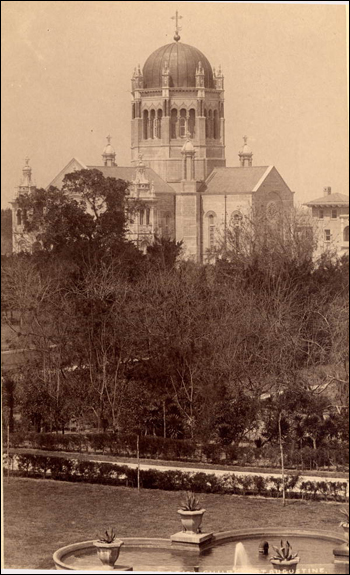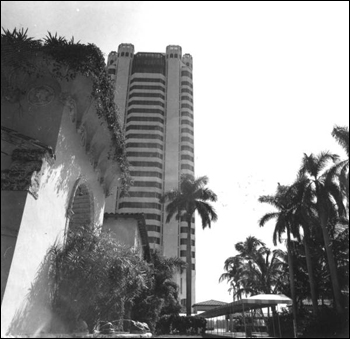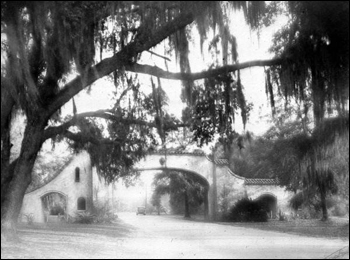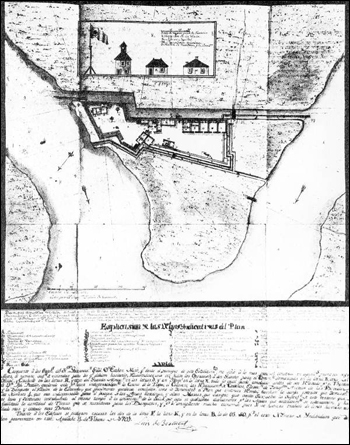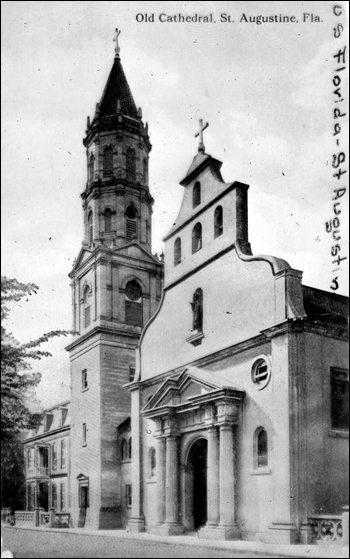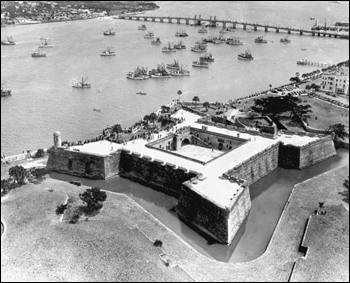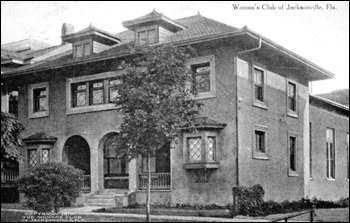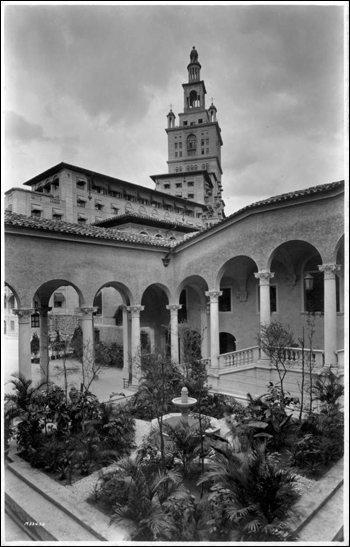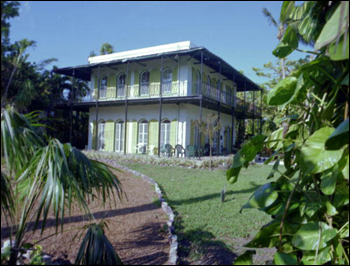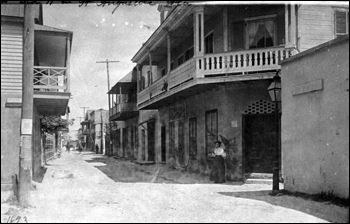Photo Exhibits
Photo exhibits spotlight various topics in Florida history, and are accompanied by brief text intended to place selected materials in historical context.
Spanish Architecture in Florida
Spanish Heritage and Florida's Architectural History
From the earliest European settlements in North America and the establishment of the forts and missions of the Spanish Empire, to the growth of Florida's tourism industry and the latter-day efforts to preserve historic structures, the evidence of 500 years of Spanish heritage is clear in Florida's past and present architecture.
Flagler Presbyterian Memorial church: Saint Augustine, Florida (after 1890)
Image Number: PR20724
Henry Flagler built this in memory of his daughter at Valencia and Seville streets. It was dedicated on March 16, 1890.
Skyscraper next to Spanish architecture: Boca Raton, Florida
Image Number: PR00988
Entrance to Los Robles: Tallahassee, Florida (1930s)
Image Number: N043365
Plan of Fort San Marcos de Apalache: St. Marks, Florida (1791)
Image Number: PR03399
Old Cathedral: Saint Augustine, Florida (1910s)
Image Number: N045153
In St. Augustine and Pensacola, ancient cottages show early attempts at recreating Spanish villages and homes in Florida. For much of Florida's Spanish Colonial period, buildings were constructed of impermanent materials such as mud, wood, and palm thatch. None of the structures from Florida's first Spanish settlers survive, although the street lay-outs in St. Augustine remain. Once Spanish architects and builders began to use the native stone material, coquina, more lasting structures were created. In the late 18th and early 19th centuries, during Florida's second Spanish colonial period, large homes built for plantation owners and government officials reflected the centuries of European colonial history already passing and the emergence of architectural characteristics unique to the modern-day southeastern United States.
Aerial view of Castillo de San Marcos: Saint Augustine, Florida
Image Number: PR09521
The Castillo de San Marcos in St. Augustine is Florida's dominant Spanish Colonial landmark. Construction of the fortress, which took a quarter century, was completed in 1696. With walls 16 feet thick at the base and protected by a moat, the Castillo was never taken by force. The principal material is coquina, a sedimentary rock formed from billions of tiny seashells and quarried nearby. Most of the labor of quarrying and building was performed by Native Americans under the supervision of Spanish artisans.
Women's Club of Jacksonville, Florida (ca. 1910)
Image Number: N032689
Many of the state's most iconic buildings, such as grand hotels, cathedrals, and civic buildings, were constructed during the Spanish Colonial revival and Mediterranean revival periods of architecture.
Garden at the Miami Biltmore Hotel: Coral Gables, Florida (ca. 1926)
Image Number: RC15841
View of the south side of the Hemingway House. (1998)
Image Number: DM5608
Photo by Dale M. McDonald
Accompanying note: "Photo taken a couple of months after hurricane George hit the Florida Keys and Key West. Shows extensive damage to shrubbery and trees on property."
Street scene: St. Augustine, Florida (1893)
Image Number: N039739

 Listen: The Gospel Program
Listen: The Gospel Program